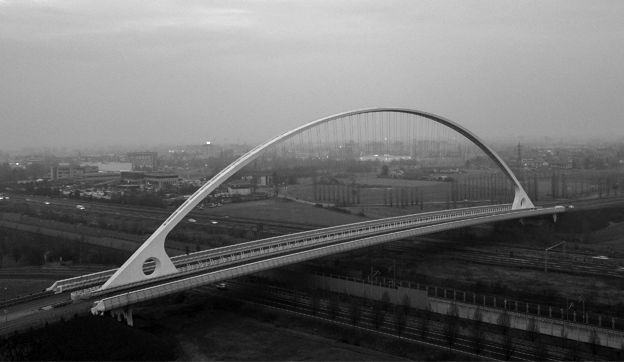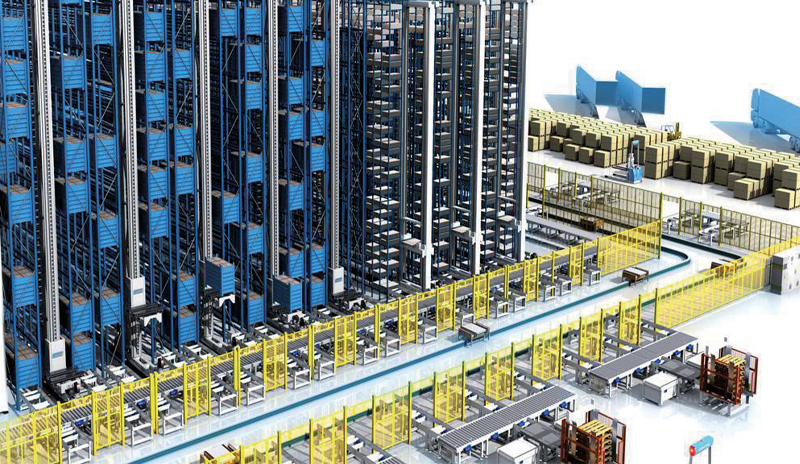
Cable-Stayed Arch - A slender cable-stayed arch and a central box girder deck with lateral cantilevers stand as the main structural elements of the bridge
Photo: © Gabrielesupertramp - Opera propria, CC BY-SA 4.0, commons wikimedia
Abstract
The stability phenomenon of the lateral buckling of a cable-stayed arch imposes restrictions on the design of the arch itself. The cable-stayed arch on one of the three bridges designed by Santiago Calatrava in Reggio Emilia, Italy, is a brilliant example of how computer aided engineering can assist engineers to contrive an optimal solution to the problem of lateral buckling.

